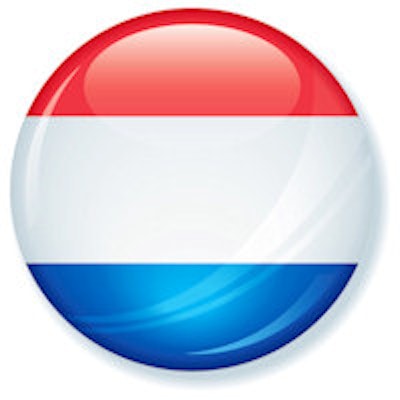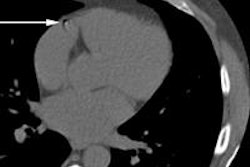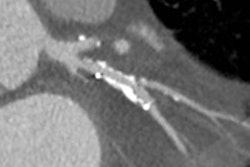
Coronary artery calcium scores are underestimated significantly in larger patients compared with smaller ones -- enough to potentially alter their risk stratification, according to researchers from the Netherlands.
The group from University Medical Center Utrecht used a phantom to compare the same bits of calcium in large versus small chest sizes on four different state-of-the-art scanners. The scores fell by as much as half for the larger subjects on both Mass and Agatston scoring methods.
"Calcium scores are strong predictors of future cardiovascular events," said lead author Dr. Martin Willemink, in a presentation at the RSNA 2014 meeting. "Recent guidelines from the American Heart Association recommend that even asymptomatic adults from low to intermediate and intermediate risk should be evaluated for coronary artery calcium with CT," he said -- a recommendation that covers as much as 40% of the U.S. population.
As a result, the number of CT scans for calcium scoring will increase tremendously in the coming years, he added. That means it will be essential to provide a strong foundation for CT scanning protocols to ensure the accuracy and relevance of the scores.
"Currently, it is not known whether calcium scores derived from small-sized patients are comparable to calcium scores in large patients, and it is not known for all major CT vendors, so that's what we evaluated in the current study," he said, adding that the study aimed to determine the intervendor variability of coronary artery calcifications expressed in Agatston and Mass scores.
Willemink and his co-investigators Niels van der Werf, Joachim Wildberger, Marcel Greuter et al, used a small anthropomorphic phantom to simulate small chest sizes and used the same phantom adding an extension ring with fat density to simulate large chest sizes. All scans were acquired at 120 kV, and each scan used a separate large and small patient protocol.
They scanned the phantoms, large and small, with state-of-the-art CT scanners from four major vendors, based on the manufacturers' protocols for large and small patients, and using the manufacturer's software for each machine to calculate Mass and Agatston calcium scores on the following scanners:
- Brilliance CT, Philips Healthcare
- Discovery 750 HD, GE Healthcare
- Definition Flash, Siemens Healthcare
- Aquilion One Vision, Toshiba Medical Systems
The results showed that coronary artery calcium scores are underestimated at larger chest sizes by as much as 50% for Agatston scores and 49% for mass scores, Willemink said. The largest Agatston score was 160 and the smallest just slightly above zero. There was more noise for every vendor at the large chest sizes. Underestimation of calcium scores by patient size differed by vendor, and there were large differences between the vendors, he added.
| Results: Agatston scores (mean, range) | ||
| Vendor | Small patient | Large patient |
| Philips | 10 (9-35) | 9 (5-10) |
| GE | 113 (72-133) | 16 (15-20) |
| Siemens | 34 (30-37) | 27 (24-32) |
| Toshiba | 87 (85-89) | 45 (29-53) |
| Results: Mass scores (mean, range) | ||
| Vendor | Small patient | Large patient |
| Philips | 4 (3-9) mg | 4 (4-6) mg |
| GE | 18 (14-21) mg | 2 (2-4) mg |
| Siemens | 8 (8-9) mg | 8 (7-8) mg |
| Toshiba | 20 (20-20) mg | 10 (8-13) mg |
Adding the extension ring led to reduced Agatston scores for all vendors of between 17% and 86%, and reduced mass scores for three vendors, from 11% to 86%, Willemink stated.
As for study limitations, "It was an in-vitro study and we used a nondynamic chest phantom with very small bores and very small calcifications, so the results might be different with in vivo data and maybe with larger calcifications," he noted.
Coronary calcium scores are underestimated at the larger chest size, and this underestimation can be up to 50% for Agatston scores and up to 49% for mass scores, he said. The underestimations differed substantially and except for one vendor, the large- size patients had slightly higher scores.
Body size is an important factor in determining the coronary calcium score, and may impact the perceived risk of the patient for future cardiovascular events. When following up on coronary calcium scores, patients should be rescanned in the same scanner model.



















